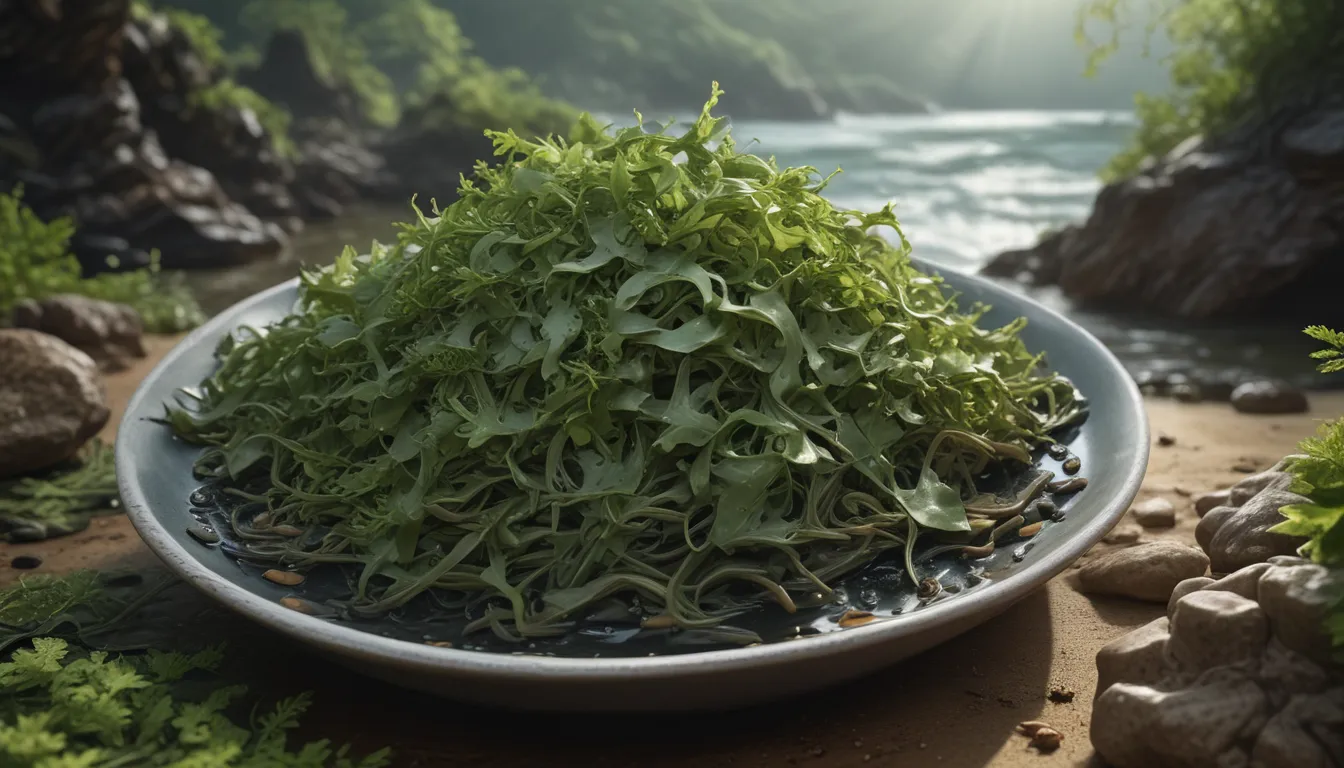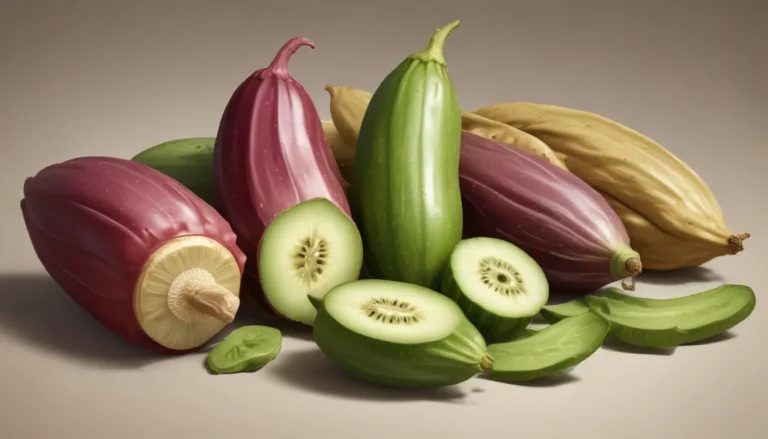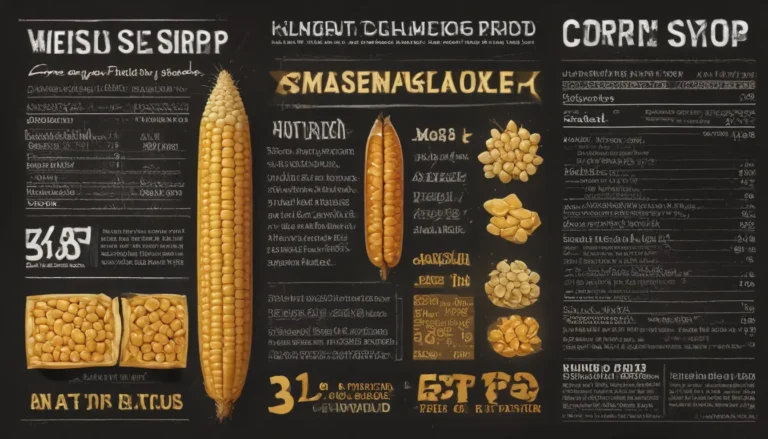The pictures in our articles might not always show exactly what the text is talking about. We use these images to make the article more interesting and eye-catching. They are there to add to the text, but not to replace it or show every detail.
Kombu, a prized ingredient in Japanese cuisine, has captivated the taste buds of food enthusiasts around the world. This edible kelp, rich in vitamins and minerals, offers a unique umami flavor that elevates the taste of soups, stews, and broths. As more people embrace the benefits of this versatile seaweed, it's essential to delve deeper into its cultivation, culinary uses, and health perks. Let's embark on a journey to uncover 15 intriguing facts about kombu, shedding light on its remarkable qualities and how it can enrich your culinary adventures.
Unveiling the Essence of Kombu
- Type of Edible Kelp: Kombu, scientifically known as Laminaria japonica, is a type of seaweed belonging to the kelp family, widely enjoyed in Asian countries, particularly in Japan.
- Nutritional Powerhouse: Rich in vitamins and minerals such as iodine, calcium, iron, and magnesium, kombu offers a bounty of health benefits. Its high fiber content and antioxidants further contribute to overall well-being.
The Culinary Delights of Kombu
- Japanese Culinary Staple: Kombu takes center stage in traditional Japanese dishes like miso soup, sushi, and dashi broth, imparting a distinct umami flavor that enhances the dining experience.
- Natural Tenderizer: Enzymes present in kombu can break down proteins, making it an excellent natural tenderizer for tough meats. Incorporating kombu into marinades can result in juicier and more flavorful meat dishes.
Uncovering the Health Benefits of Kombu
- Supports Thyroid Function: With its high iodine content, regular consumption of kombu can help maintain thyroid health and function effectively.
- Anti-Inflammatory Properties: Kombu is believed to possess anti-inflammatory properties that can aid in reducing inflammation in the body and promote overall well-being.
Exploring the World of Kombu Harvesting and Preparation
- Underwater Forests: Kombu is harvested from underwater forests, primarily along the coasts of Japan and other regions with suitable marine environments.
- Drying Process: After harvesting, kombu is meticulously washed and dried to remove excess moisture. In its dried form, kombu can be rehydrated before use in various culinary creations.
Embracing Kombu’s Versatility and Eco-Friendliness
- Vegetarian and Vegan Fare: Kombu finds a special place in vegetarian and vegan dishes, adding depth and complexity to plant-based recipes.
- Long Shelf Life: Dried kombu boasts an extended shelf life, making it a convenient pantry staple that retains its flavor and nutritional value for months or even years.
Delving into the Unique Properties of Kombu
- Detoxifying Agent: Kombu contains alginic acid, known for its ability to help eliminate heavy metals and toxins from the body, earning kombu the title of a natural detoxifier.
- Eco-Friendly Source: Considered a sustainable food source, kombu grows rapidly and thrives without the need for freshwater or fertilizers, contributing to marine biodiversity.
Infusing Flavor and Nutrition with Kombu
- Natural Seasoning: In addition to enhancing dishes' taste, kombu can serve as a natural seasoning, forming the base for stocks and broths in various recipes.
- Versatile Ingredient: Available in various forms like whole strips, flakes, or powdered form, kombu offers culinary enthusiasts the flexibility to experiment in diverse culinary creations.
Conclusion: A Culinary Adventure with Kombu
Amidst the evolving culinary landscape, kombu emerges as a treasure trove of taste and nutrition. From enhancing umami flavors to promoting thyroid health, kombu embodies a world of culinary possibilities waiting to be explored. Whether you're a seasoned chef or an adventurous food lover, incorporating kombu into your dishes promises a journey filled with delightful flavors and healthful benefits. So, why not embark on a culinary escapade with kombu and unlock the endless potential of this versatile ingredient?
FAQs: Navigating the World of Kombu
- What is kombu?
-
Kombu is a type of edible kelp prominent in Japanese cooking, celebrated for its unique flavor and high umami content.
-
How is kombu different from other seaweeds?
-
Kombu distinguishes itself with its strong umami flavor, derived from its naturally occurring glutamic acid, setting it apart from other seaweeds.
-
What are the health benefits of consuming kombu?
-
With its iodine, vitamins, minerals, and antioxidants, kombu can support thyroid health, provide essential nutrients, and contribute to overall well-being.
-
How can I incorporate kombu into my daily diet?
-
Kombu can enhance soups, stews, stocks, and salads, adding depth and flavor to various dishes. It can also be used as sushi wraps or toppings for rice dishes.
-
Where can I buy kombu?
-
Kombu is readily available in Asian grocery stores, health food outlets, and online retailers in dried sheet or flake form for convenient usage.
-
Are there any precautions when consuming kombu?
- While generally safe for consumption, moderation is key due to kombu's high iodine content. If you have specific concerns or dietary restrictions, consulting a healthcare professional is advisable.
Kombu opens up a world of culinary possibilities, infusing dishes with rich umami flavors and nutritional benefits. Embark on a culinary voyage with kombu and explore its diverse applications in creating delicious, healthful meals. Unleash your creativity in the kitchen with this versatile seaweed and savor the delightful flavors it brings to your table.






